Before every exhibition opens to the public, hundreds of hours go into planning, conservation, and preparation. Here’s a sneak peek at some of the conservation and preparation work that brought Beyond the Divide: Merchant, Artist, Samurai in Edo Japan to life.
Beyond the Divide is a show that (mostly) features works from UMFA’s permanent collection. Many of the screens, scrolls, and woodblock prints required conservation treatment. Some of the screens had large tears and lifting pigment fragments that had to be repaired and secured. The scrolls had tears along the hanging rod joints and severe creases that needed to be pulled back into plane. The woodblock prints had a variety of tears, losses, folds, and surface abrasions that detracted from the visual identity of the work. One of the prints by Utagawa Toyokuni had been badly abraded prior to its accession, causing large surface losses in the dark sky which were distracting to view. These losses were consolidated and—using a protective layer followed by magnification and very small brushes—retouched with watercolor so the artwork could be fully appreciated once again. All of these issues were addressed by UMFA’s conservator Stacey Kelly, who specializes in works of art on paper. The conservation code of ethics requires treatments to be reversible or ”re-treatable,” so all of Kelly’s repairs can be removed in the future if the museum industry discovers new methods. She also uses chemically stable materials that will not react or age poorly, affecting the artwork. Sometimes the Museum receives gifts or acquires works of art with similar types of damage. It is the conservator’s job to identify, track, and address these issues to ensure the long-term preservation of the collection. While it is impossible to stop deterioration, measures are taken to slow that process down. Once the works enter the collection, they are stored in our climate controlled facility, and are only handled by highly trained individuals, minimizing potential risks to the artwork.
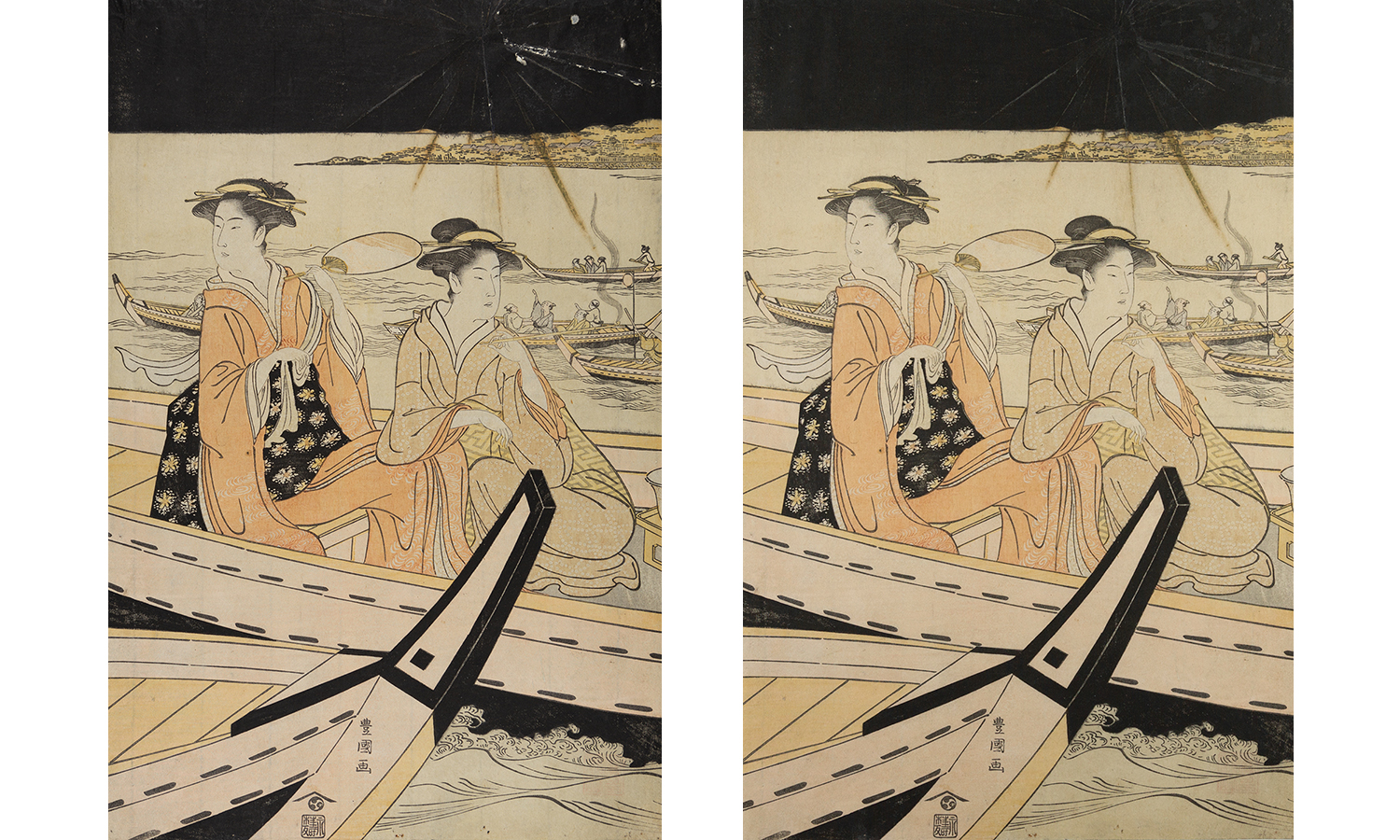
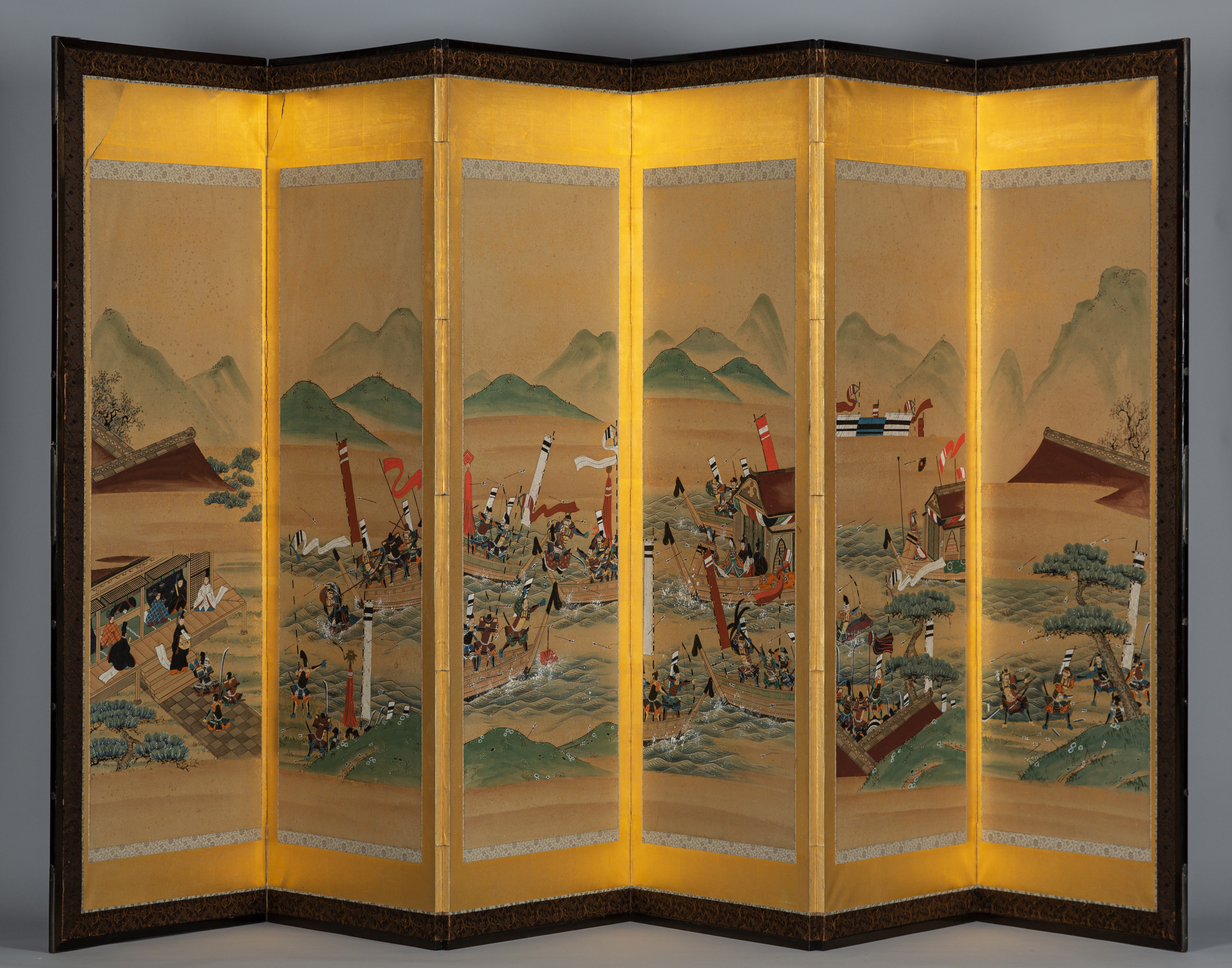
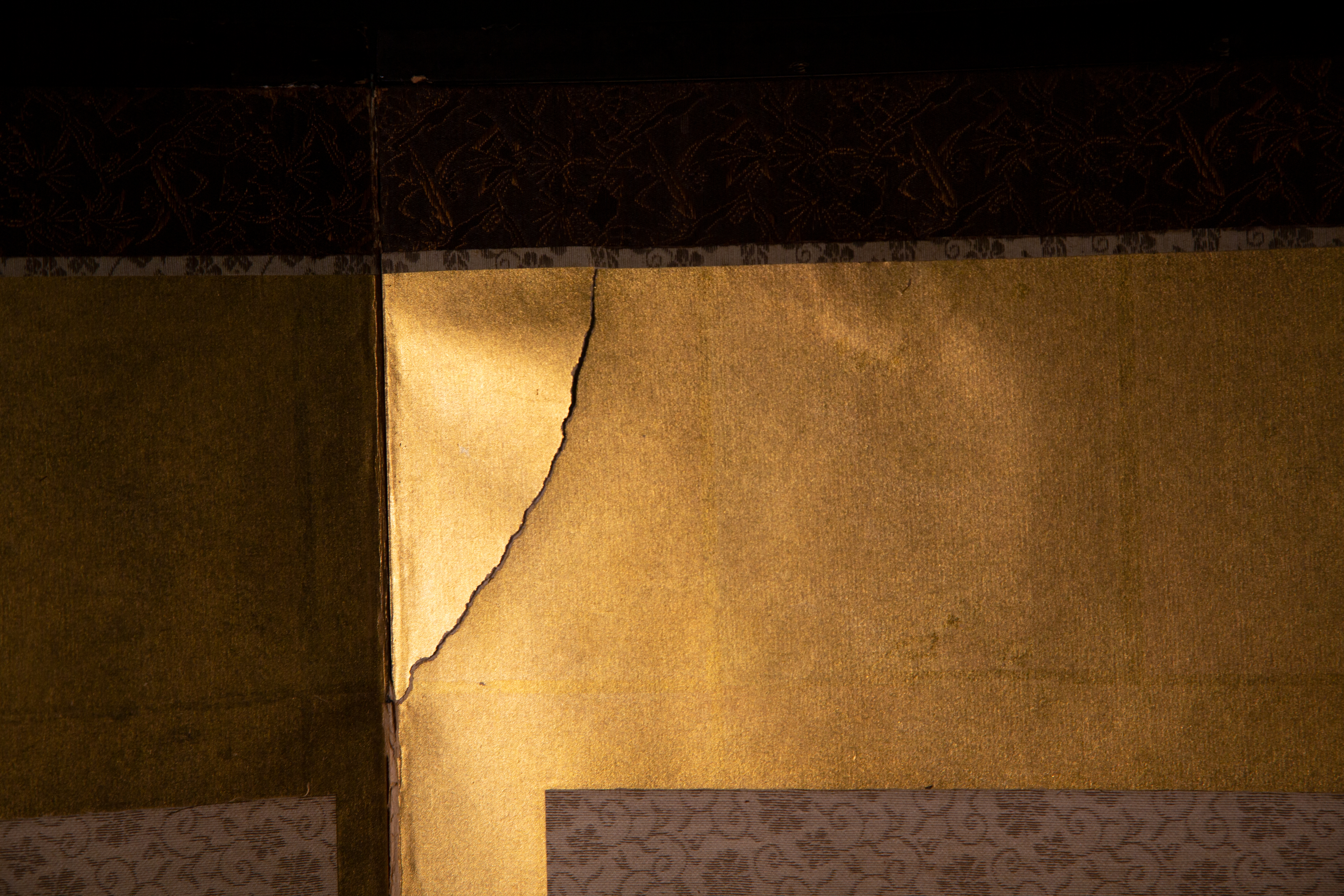
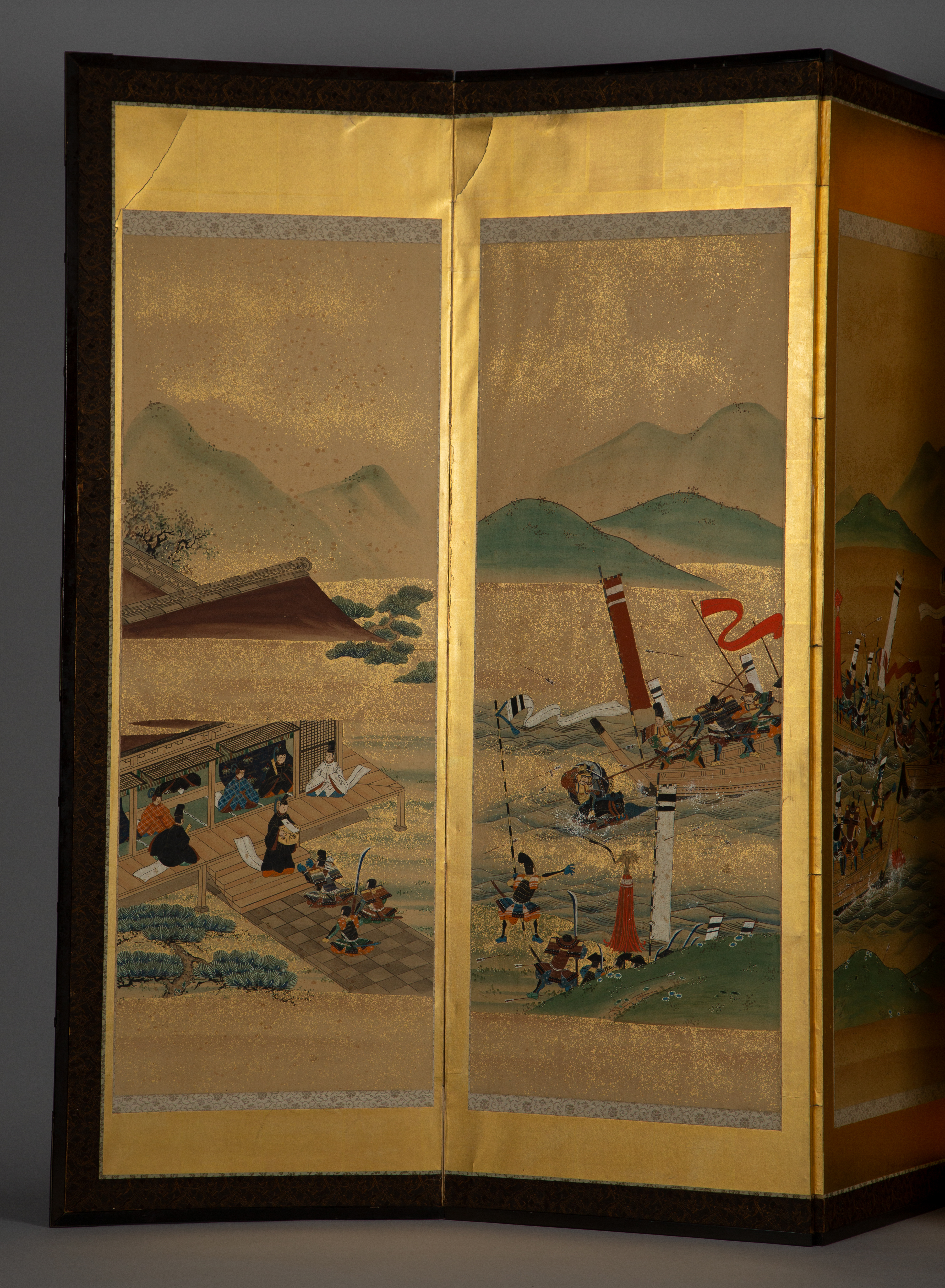
Once all objects are addressed by the conservator, they are prepared for exhibition. Preparation work focuses on presenting objects in a safe manner with exhibition mounts, archival mats, frames, etc. Such mounts keep the object safe without disrupting the curators’ vision and narrative of the show. You will see that many of the screens, scrolls, and objects on view have discreet mounts holding these delicate works in place, without causing any harm or risk to the works.
The object that presented the greatest challenge in this exhibition was the magnificent full set of sixteenth-century samurai armor right at the entrance of the exhibition. It was the curator’s vision to display the suit of armor the way armors were traditionally displayed in a samurai’s home—sitting upright on its storage box. Unfortunately, the object was in unstable condition before exhibition. In order for the armor to be displayed upright, a lot of work had to be done to ensure all components were stabilized. Underneath each armor section are layers of silk and paper, which were deteriorated and falling apart. First, thin sheets of silk were sewn around the deteriorated areas through existing holes in the armor or chainmail, creating a packet that will hold all these pieces together and prevent any loss of original material until the object receives further conservation treatment.
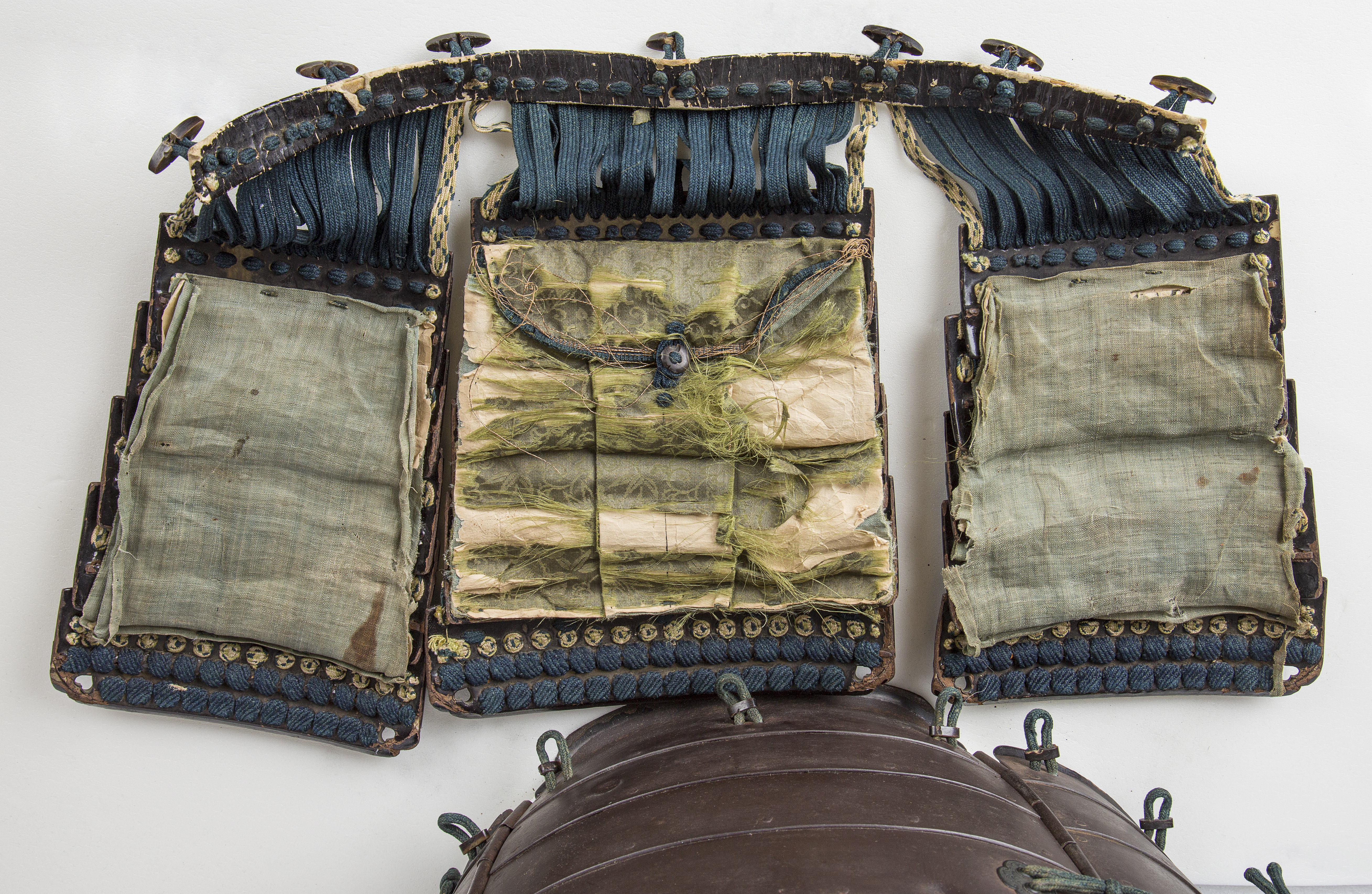
For this project, the UMFA collaborated with NHMU preparator, William Thomas, who also created all the other mounts in the show supporting the swords, screens, and scrolls. Thomas made an armature that supports the main body of the armor and the helmet, with additional acrylic extensions that support the shoulders, arms, and belt.
Many of the structural sections of the armor that were weight-bearing are no longer strong enough to hold the weight of the metal plates. As such, the collections team created Ethafoam supports for each section—each shoulder pad, the belt, each metal plate on the belt, and the shin guards. The foam was covered in black archival fabric and the armor was sewn onto the supports through preexisting holes in the armor. This allowed the weight of the armor to be evenly distributed throughout the support, allowing the pieces to then be attached to the main mount with Velcro. This work required a team of seven people working together to make the mounts, create the foam supports, do a ton of sewing, and finally put the pieces together.
The goal of this kind of behind-the-scenes work is that it be barely noticeable when the objects are on view. It is exciting to showcase some of the work by the collections department—the unsung heroes of all of UMFA’s exhibitions. We hope you have a chance to go through the exhibition and try to spot some of the repairs and mounts that are mentioned here.
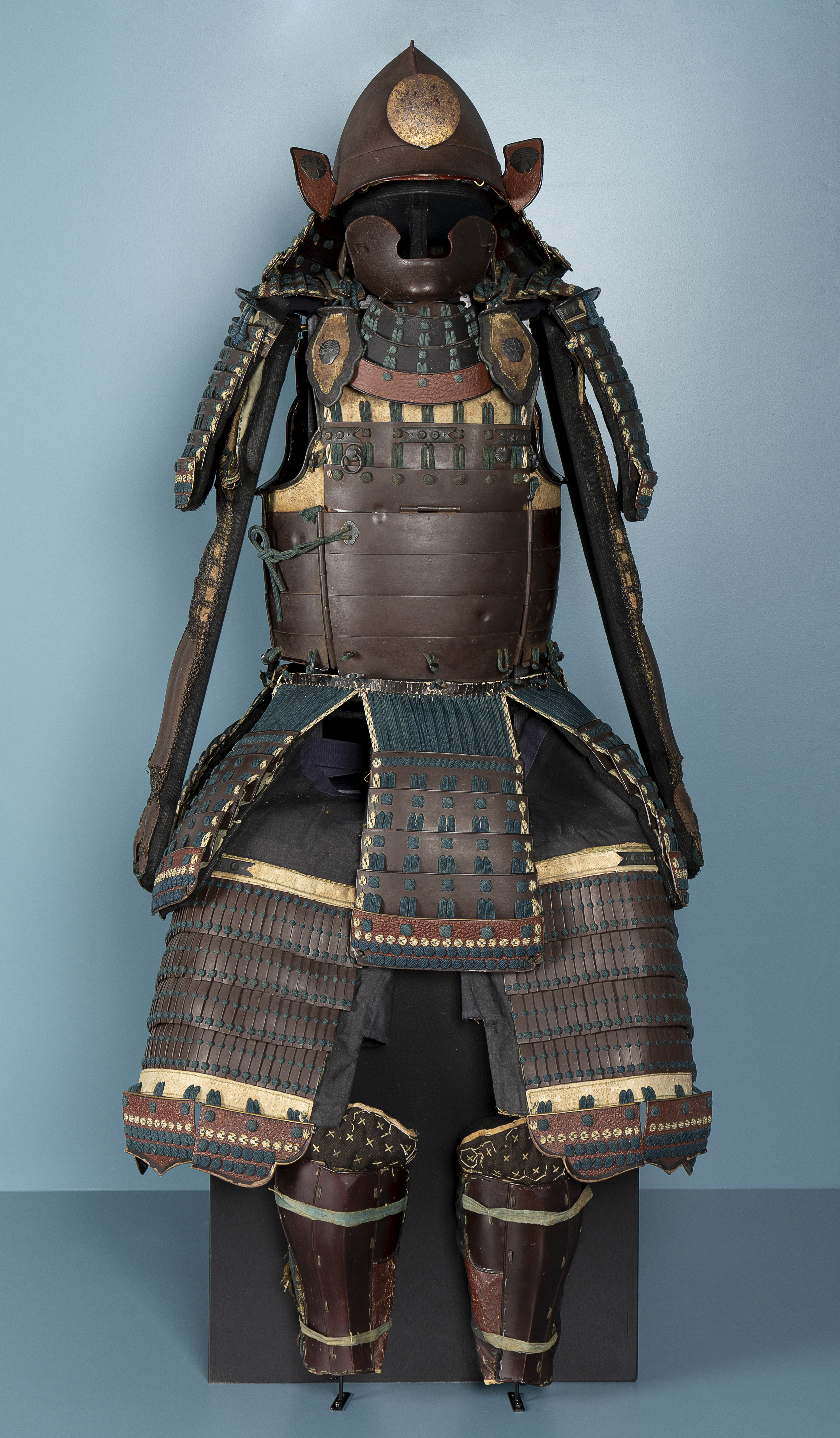
Stacey M. Kelly is the UMFA’s conservator. She specializes in paper conservation and has treated a variety of artworks including Asian, Islamic and European works on paper, and important historical artifacts including a page from the original manuscript of the Book of Mormon, and the Idaho State Constitution.
Adelaide Ryder is the UMFA’s collections photographer and digital assets manager. She uses her artistic skills gained from her MFA in photography and technical skills from years of publication, archive, and assets management experience to photographically document the Museum’s collection and update the collection’s database. As one of the highly trained object handlers on the collections team she helps with object care and exhibition work.
